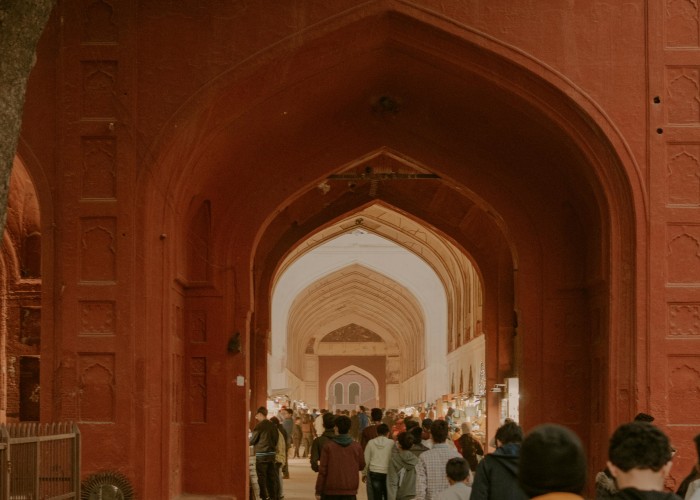Delhi, India’s vibrant capital city, is a living museum of history and culture. A Delhi Heritage Walk is one of the best ways to experience its rich past, weaving through centuries of dynasties, rulers, and civilizations. From the towering minarets of Qutub Minar to the grandeur of Red Fort and the intricate lanes of Old Delhi, every corner tells a story. Delhi Heritage Walk, Tour & Trek.
The heritage walks often cover sites like Jama Masjid, Chandni Chowk, Humayun’s Tomb, Mehrauli Archaeological Park, Lodhi Gardens, and Mughal-era havelis. These walks are not just about monuments; they are about understanding the soul of Delhi—its food, people, and traditions that connect the old with the new.
For global travelers, Delhi’s heritage walks provide an opportunity to dive deep into the history of India while enjoying a guided, step-by-step exploration of landmarks that shaped the subcontinent.
Best Time to Visit
Delhi has distinct seasons, and the experience of a heritage walk is closely tied to the weather:
- October to March (Winter): The most comfortable time with pleasant weather. This is also the peak season for cultural festivals.
- April to June (Summer): Temperatures rise sharply, making early morning or late evening walks preferable.
- July to September (Monsoon): Humid and unpredictable with rains, but lush surroundings enhance the city’s green spaces.
For a relaxed walk, November to February is often considered ideal, as temperatures are mild and perfect for outdoor activities.
How to Reach Delhi
Delhi is one of the most accessible cities in India and well connected nationally and internationally.
- By Air: Indira Gandhi International Airport connects Delhi to major cities across the globe. Domestic and international flights operate round the clock.
- By Train: Delhi has several major railway stations, including New Delhi Railway Station, Old Delhi Railway Station, and Hazrat Nizamuddin, linking it to all parts of India.
- By Road: The city is well connected through expressways and highways to Agra, Jaipur, Chandigarh, and other destinations. Buses and taxis are widely available.
- By Metro: Within the city, the Delhi Metro is the fastest way to reach starting points for many heritage walks.
Entry Fees and Permits
Most heritage walks include visits to monuments that have entry fees. Charges vary for Indian and international visitors. Approximate costs (subject to change):
- Red Fort: INR 50 (Indians), INR 600 (foreign nationals).
- Qutub Minar: INR 40 (Indians), INR 600 (foreign nationals).
- Humayun’s Tomb: INR 40 (Indians), INR 600 (foreign nationals).
- Jama Masjid: Entry is free, but camera charges apply.
- Mehrauli Archaeological Park and Lodhi Gardens: Free entry. Delhi Heritage Walk, Tour & Trek.
For group or guided heritage walks, additional charges may apply depending on the tour operator, but exploring on your own is also possible.
Food Availability and Meal Options
One of the highlights of a Delhi Heritage Walk is its culinary experiences, especially in Old Delhi. Options include:
- Street Food: Parathas at Paranthe Wali Gali, jalebis, kebabs, and chaat.
- Traditional Meals: Mughlai cuisine, North Indian thalis, and biryanis.
- Vegetarian Choices: Widely available, including South Indian dosa, paneer curries, and local sweets.
- Modern Cafes: Lodhi Road, Connaught Place, and Hauz Khas areas offer international and fusion cuisines.
Tip: Carry bottled water, especially in summer, and opt for freshly cooked food from hygienic stalls.
Packing List and Essentials
A well-prepared traveler enjoys the walk without discomfort. Pack these essentials:
- Comfortable walking shoes
- Light cotton clothes in summer, layers in winter
- Sunglasses, hat, and sunscreen
- Water bottle (refillable is preferred)
- A small backpack for essentials
- Umbrella or raincoat during monsoon
- Camera or smartphone for photography
- Hand sanitizer and wet wipes
Safety Tips and Local Regulations
- Stay hydrated and take breaks in shaded areas.
- Be cautious in crowded markets like Chandni Chowk.
- Keep valuables secure; use crossbody bags.
- Follow monument rules regarding photography.
- Respect religious places by covering shoulders and knees.
- Use registered guides if opting for a guided tour.
- Always cross roads carefully; Delhi traffic can be chaotic.
Tips for Beginners or First-Time Visitors
- Start early in the morning to avoid heat and crowds.
- Begin with a short walk (2–3 hours) before attempting longer ones.
- Keep small cash handy for snacks and entry tickets.
- Wear modest clothing when visiting mosques and temples.
- Combine your walk with metro rides for quicker access.
- Don’t rush; heritage walks are about absorbing history slowly.
Local Customs or Cultural Etiquette
- Greet locals with a simple “Namaste.”
- Remove shoes before entering mosques and temples.
- Avoid eating or drinking inside religious premises.
- Ask permission before photographing people, especially shopkeepers and locals.
- Respect queues and follow group walking etiquette.
- Bargaining in markets is common but should be polite. Delhi Heritage Walk, Tour & Trek.
Frequently Asked Questions (FAQs)
1. How long does a Delhi Heritage Walk take?
Walks usually last between 2 to 4 hours, depending on the route and number of monuments covered.
2. Is the walk difficult?
Most routes are easy, involving flat walking surfaces. However, some areas like Mehrauli Archaeological Park may involve uneven terrain.
3. Are restrooms available along the routes?
Yes, public restrooms and facilities are available near most major monuments.
4. Do I need to hire a guide?
It’s optional. Guides add historical context, but self-guided walks are also rewarding.
5. What is the altitude of Delhi?
Delhi is located at around 216 meters (709 feet) above sea level.
6. Can children and elderly people join?
Yes, most routes are family-friendly, but carrying water and taking breaks is advised.
7. Are English-speaking guides available?
Yes, professional guides speak English, Hindi, and sometimes other international languages.
8. What is the best heritage walk in Delhi?
Popular routes include Old Delhi walk (Jama Masjid and Chandni Chowk), Mehrauli Archaeological walk, and Lodhi Gardens walk.
9. Is photography allowed during the walk?
Photography is permitted in most areas but restricted inside certain religious or government buildings.
10. Can I try food during the walk?
Yes, Old Delhi walks often include food tastings, which are highlights of the tour.
Conclusion
The Delhi Heritage Walk is not just a journey through monuments but a window into India’s layered history, traditions, and everyday life. Whether you’re strolling past Mughal-era forts, exploring hidden stepwells, or tasting kebabs in Old Delhi, each step reveals a new perspective. Delhi Heritage Walk, Tour & Trek.






Leave a Reply